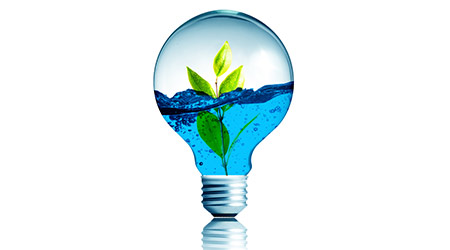Water and Energy Efficiency Technology Allows FM To Do More With Less
Energy and water efficiency is one technology area where product development has moved rapidly.
Doing more with less is the order of the day for most facility managers. One way savvy FMs have found to attack this new de facto directive is make liberal use of new technology, especially in the areas of energy and water efficiency. Deploying technology that actually saves money and pays back quickly is not only an important strategy for managing a shrinking budget, it’s also critical to sustainability goals.
“There are fewer dollars coming in, there’s financial stress,” says Peter Strazdas, associate vice president, facilities management, Western Michigan University. “So we need to leverage technology and information. You have to work smarter.”
Energy and water efficiency are two areas where product development has moved rapidly in the past several years. New products for metering water and energy use, and feeding that data back to a BAS are more common, and more affordable, than ever before.
Continuous optimization
Being energy and water efficient these days really requires a process of continuous commissioning, says Strazdas. “Data is telling you stories. You just need to interpret it,” he says.
These technologies, as well as better products for monitoring power quality, ensuring power reliability, and even generating and distributing renewable energy, are all important parts of the continuous commissioning process. When equipment is constantly optimized, then the chances are far less it’ll drift outside the original design intent, and original efficiency. The goal, again, is be more efficient, both in terms of saving energy and water, but also in how facility managers are using increasingly scarce staff time.
As one example, water metering products and software are proliferating, and one of the main advantages of these products can be to alert FMs immediately if there’s a leak in an irrigation pipe or other not-frequently-inspected water-using piece of equipment. In the past, FMs may not have known about the problem until the monthly water bill came and was off the charts. Then they’d have to spend valuable time locating and diagnosing the leak. So not only can these new water meters save water because the problem can immediately be corrected, they can also save valuable time FMs can use to actually focus on their operations.
If FMs are lost as to where to start in terms of benchmarking, commissioning, or simply systemizing efficient operations, LEED for Building Operations and Maintenance can offer tips and best practices. The newest iteration of the rating system — LEEDv4 — includes a prerequisite for building-level water metering. It’s the first time that strategy has been required by LEED for any level of certification. There is also a prerequisite for building-level energy metering, as well as additional credits for enhanced water and energy metering.
Email comments and questions to greg.zimmerman@tradepress.com.
Related Topics:













